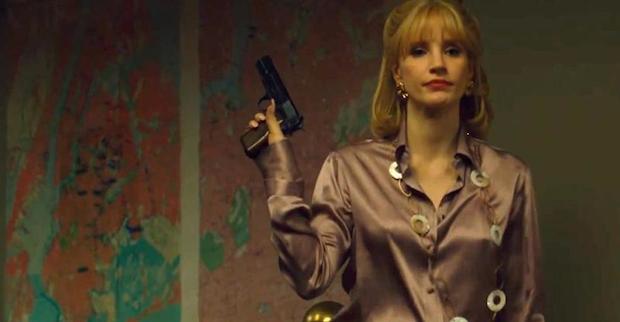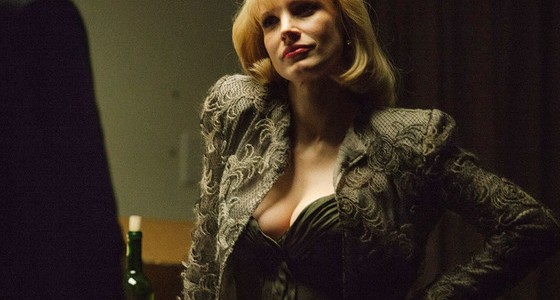
There’s a sense among some film fans that we are about to lose Oscar Isaac. The actor – who has worked regularly since the mid-2000s and caught most people’s attention in 2013’s INSIDE LLEWELYN DAVIS – has recently made the leap to blockbuster pictures, being cast in both J. J. Abrams’ STAR WARS sequels and as the titular villain in Bryan Singer’s X-MEN: APOCALYPSE. If this is indeed the last time we see Isaac as a traditional leading man, then it’s quite the send-off. Writer-director J.C. Chandor neatly side-steps a century of American crime films to create a tale of modest integrity in a period where any integrity at all would stand out.

The year is 1981, and Abel Morales (Oscar Isaac) is closing on the largest deal of his career. Abel, who owns a petrol company that services homes in all five boroughs, has convinced a local land baron to sell him an unused storage facility based on the Hudson River. If Abel can come up with the money, then he will be able to bring his oil in directly by boat, opening his company up for rapid expansion. This happens to be a big ‘if;’ Anna (Jessica Chastain), Abel’s wife, might have found something incriminating in the company ledgers, and an ambitious district attorney (David Oyelowo) wants to pin his reputation to Abel’s arrest for fraudulent activity. Meanwhile, an unknown party continues to highjack shipments of petrol from Abel’s company, leaving his trunks empty and his union drivers beaten and scared.

A MOST VIOLENT YEAR operates under three assumptions, often at odds with each other. The first is that Abel remains, inherently, a decent man who tries to take the high road in his business transactions; the second, that Abel and Anna have cut corners with their business and are not even sure if they can untangle their own finances; and the third, that Abel’s desire to do the right thing may have more to do with his business IQ than his conscience. When Abel’s delivery drivers are the target of frequent hijackings, Abel refuses to allow the union to arm his drivers. This is pitched as both part of Abel’s desire to do the right thing – to avoid the possibility that an innocent bystander could get hurt in the crossfire between two separate groups – but also as an acknowledgement of the escalation this would put into place. With a federal investigation happening regarding his business, a public shooting would increase the pressure from the police or make his financial backers rethink their continued support.

What Chandor has created for his character is, in essence, a game of politically-motivated Jenga. Each change to the business requires resources to be pulled from an uncertain area to maintain the functionality of the structure. The smart thing, then, would be to stop before the tower completely collapses, but Abel’s competitors have the advantage of time and money on him, and his only winning move is to keep going. If Abel can cobble together the funding for the waterfront storage facility he wants to buy, then he will have the edge in terms of shipping and distribution in Brooklyn; but in order to do so, he must ensure that his complicated empire won’t collapse on itself or, worse yet, expose itself to litigation.

There almost seems to be an autobiographical quality to A MOST VIOLENT YEAR, a cataloguing of the ways in which both Abel and Chandor are tempted to turn down the road to violence. Strip away the period details and the stylish soundtrack and Chandor has created the anti-gangster film, a movie that does everything it can to elude its influences. Anna makes frequent reference to her mob ties – the shadow of her father looms over every interaction between the two – but the film is careful never to show her side of the family. Furthermore, despite the violence suggested in the title of the film, only a handful of shots are fired in the movie. 1981 may have been a most violent year, but this is not a most violent movie; the allure of violence surrounds Abel, entices him to further compromise his integrity to better safeguard his product, but he refuses. Similarly, Chandor seems to have gone to great lengths to avoid showing violence on the screen, using it suggestively to remind us that there are consequences for the “eye for an eye” philosophy that can ruin even the best of us. As long as Abel can run his business his way – as long as Chandor is capable of making a mob movie without either overt gangsters or violence – then both men can stick to the integrity of their own vision.

A MOST VIOLENT YEAR may seem to be the type of film built to win awards – with Albert Brooks in particular a seeming certainty for a best supporting actor nomination – and its release date of December 31 ensures that the film will slide in just below the wire for award-hopeful films. A MOST VIOLENT YEAR is an engrossing display of how long one can keep a business alive and his integrity intact; if 2015 does represent the conclusion of the first (smaller) phase of Oscar Isaac’s career, then there can be no doubt that he went out on a murky high note.

— MATTHEW MONAGLE.

- [THE BIG QUESTION] WHAT’S YOUR FAVORITE FEMALE ENSEMBLE IN MOVIES? - July 22, 2016
- [IN THEATERS NOW] THE BOY (2016) - January 24, 2016
- Cult Movie Mania Releases Lucio Fulci Limited Edition VHS Sets - January 5, 2016
Tags: Albert Brooks, Crime, David Oyelowo, J.C. Chandor, Jessica Chastain, oscar isaac






No Comments